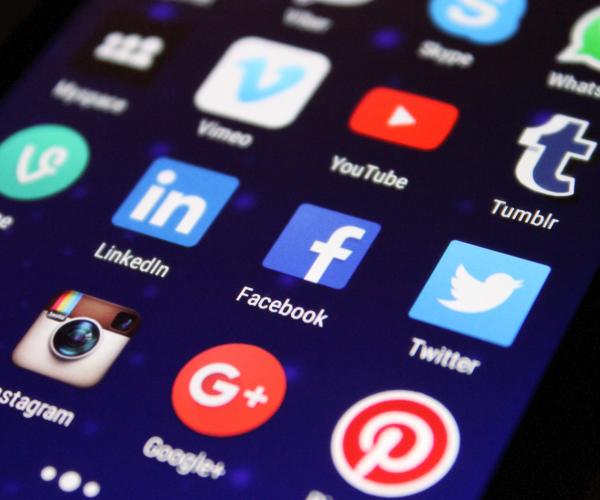Which Digital Marketing Platform is Best?


Marketing is a necessary asset for any business to receive more brand recognition and sales. If you haven’t created a marketing plan you may be a little overwhelmed at the various options for digital marketing at your disposal. While no one marketing platform is deemed “the best”, we’ll go over the ones that your business will benefit the most from.
Social Media Marketing
A popular way to market your business online is through social media. You may think that social media is used just for having an open dialogue with your customers and other potential clients, but it can be used for so much more. If your business already has a social media presence on either of these platforms, which we highly recommend, you’re already a step ahead to using the platform for advertising. Through certain platforms such as Facebook, Twitter, and LinkedIn, you can pay to advertise your business through their ad platforms. Unlike traditional types of digital marketing like Google Ads, or Mailchimp, when posting on these platforms, it’s strictly limited to people who view and use the platform.
Of the main social media platforms, Facebook is the most popular when it comes to how vast your potential reach is. As of early 2021, Facebook has 2.80 billion monthly active users. Not to mention, Facebook owns Instagram, another popular social media platform that focuses solely on photography and images. Facebook has its own ad platform that you can use to advertise to people who use Facebook and Instagram. Facebook’s targeting aspects have a wider range than Google Ads, so it’s a great tool for advertisers to use if their audience is very specific. For example, if you sell makeup, you can target women, a specific age group, and people who have listed “makeup” and other related topics under their Facebook likes. If needed, you’re also able to target income ranges and employment. Have you ever gone to a website and seen an ad for it not even a minute later on Facebook or Instagram? That’s the power of Facebook ads. Through Facebook’s ad platform, you have the ability to stick a piece of code on your website, called a pixel, and send targeted ads to the people who have visited a certain part of your website. This can be called “retargeting ads” or “boomerang ads”. Retargeting can be especially useful for scooping up those potential customers who were interested in your product or service but weren’t committed enough to make a purchase. Although this is a useful way of utilizing Facebook ads, this is also doable with Google Ads.
Other Social Media Marketing Platforms
LinkedIn is another popular platform that is mostly utilized by people in their 30’s-60’s in a professional manner. If you are an adult who has a job, you’ve likely heard of LinkedIn if you don’t have a profile already. It’s what’s called a “business to business” platform. Essentially, if your business revolves around the digital space (like us), LinkedIn is a great way to gain interest in your business as well as drive leads. It’s a great place to advertise your services to not just individual people, but businesses as well, which can save a lot of headache for other businesses that are trying to reach out to certain companies and are tired of going through individuals to get to higher-ups. LinkedIn’s advertising process is similar to Facebook’s in the way that the ads have similar criteria: they are primarily images, they can be short videos, and they are similarly sized.
Twitter is not only a major social media platform but it’s also used as a marketing tool. Twitter works similarly to Facebook in that you use your existing Twitter account (or make a new one) to promote your posts and get people to go to your website, view your products, or sign up for your newsletter. With Twitter, targeting a certain demographic is possible like the other ad platforms, but it’s not as specific as Facebook. You’re able to target people who use Twitter from a specific location, who are a certain age, and what gender they are. More than 80% of Twitter's global population is under 50 years old. 44% of U.S. adults age 18-24 use Twitter. Twitter is mostly used by younger adults, but if your ideal customers are in their 20s-40s, it may prove beneficial to try and market to your target audience on this platform.
Digital Marketing
You may be asking, “What is digital marketing without social media?” Everything we’ve talked about prior has been about what it’s like to market on a social media platform. The major difference between social media marketing and digital marketing is that social media is specific to its platform. In other words, if you’re marketing on Facebook, your ads will only show to people using Facebook. With digital marketing, you have a wider opportunity to market to people through other avenues and other, more vast platforms.
Google Ads
Google is one of the largest and most popular of PPC (pay per click) advertising platforms. Most people nowadays use Google in some way, shape, or form, whether that be by using the Google search engine, using the Google Chrome browser, using G Suite, or using Gmail. Due to its popularity, it would be a no-brainer to use the tools available to advertise on its wide range of platforms. Unlike social media marketing, Google uses what’s called the pay-per-click method of advertising. Google allows advertisers to set up a spending budget with which they can bid on certain keywords that relate to the product or service they’re marketing for. The price of the keywords can vary depending on the keyword, the location, and the quality of the ad that you will be showing based on that keyword. Due to Google’s far-reaching platform, your ad can be seen on any Google-owned or partnered website, which is starkly different to the one-website ads on social media. If you want a more in-depth look at Google Ads, take a look at our blog post, Difference in Ads, What is What and Where is it From?
Other Digital Marketing Platforms
95Visual mainly focuses on using Google Ads and Facebook Ads, as our clients benefit more from using those platforms. However, there are other existing marketing platforms that utilize different forms of online advertising such as Mailchimp, Adroll, Marketo, and Hootsuite. There are many others but these are the four we will address briefly for now.
- Mailchimp - Mailchimp is arguably the most popular platform of the four, as its primary focus is on email marketing. With the rise in social media, a lot of people are of the belief that email and email marketing is being phased out. This is not the case as it’s still a very popular form of digital marketing among businesses. Mailchimp emphasizes the use of email automation. With email automation, you can set up a chain of email templates and send them out to specific mailing lists such as newsletter subscribers, current and past leads, people who abandoned their cart at checkout, and more. Not only can you send pinpointed emails to different people of your choosing, but you can also integrate Mailchimp with other avenues of digital marketing such as Facebook. Because of its diversity in how many people you can reach with its services, as well as its usefulness in other areas of digital marketing, Mailchimp is one of the most widely used marketing platforms. Signing up for Mailchimp is free, but depending on the use of their services and how many email automations you’d like to set up, it can be an expense. Personally, we think it’s worth it.
- Adroll - Adroll is similar to Mailchimp in that it can integrate with other marketing platforms as well as e-commerce websites. Adroll has a few different purposes, the main one being that you can integrate your Facebook as well as Google Ads with Adroll to manage them all in one place. You’re also able to create new campaigns, manage audiences and look at ad metrics.
- Marketo - Marketo is another platform that takes what Adroll and Mailchimp are good at and combines the two. It’s a central hub for all of your marketing platforms, it allows you to manage stats and information gathered from marketing campaigns, and it also is capable of email automation. An added bonus to Marketo is that they’ve partnered with Adobe Experience Cloud which allows you to further customize user data, as well as create easy-to-use client profiles.
- Hootsuite - Hootsuite, while similar to the first three marketing platforms mentioned, focuses mainly on social media marketing. Hootsuite provides a channel to keep all of your social media in the right place. You can schedule social media posts, engage with customers through your social channels, and even manage social media ads. Hootsuite also integrates with Google Ads and lets you stay on top of ad engagement and statistics.
Conclusion
The digital marketing space is vast, and you have many options to choose from in deciding which platform or channel is best for your business. There are clear choices that are more likely to benefit your business than others, but there’s no one clear “best” marketing platform. Whatever works for your business and gets you viable leads is the one that will be best for you. Hopefully this blog post has at least given you some options to choose from. Now it’s time to get out there and try and find the right marketing platform for you!
If you’re still unsure of which route to take in the digital marketing space, we’re also happy to help! Marketing can be stressful especially if you don’t know where to start, so maybe your best option is to hire someone else to do it for you! We offer marketing services at different rates depending on the specifics of what you want to achieve through a marketing strategy. Let us know how we can be of service to you.
